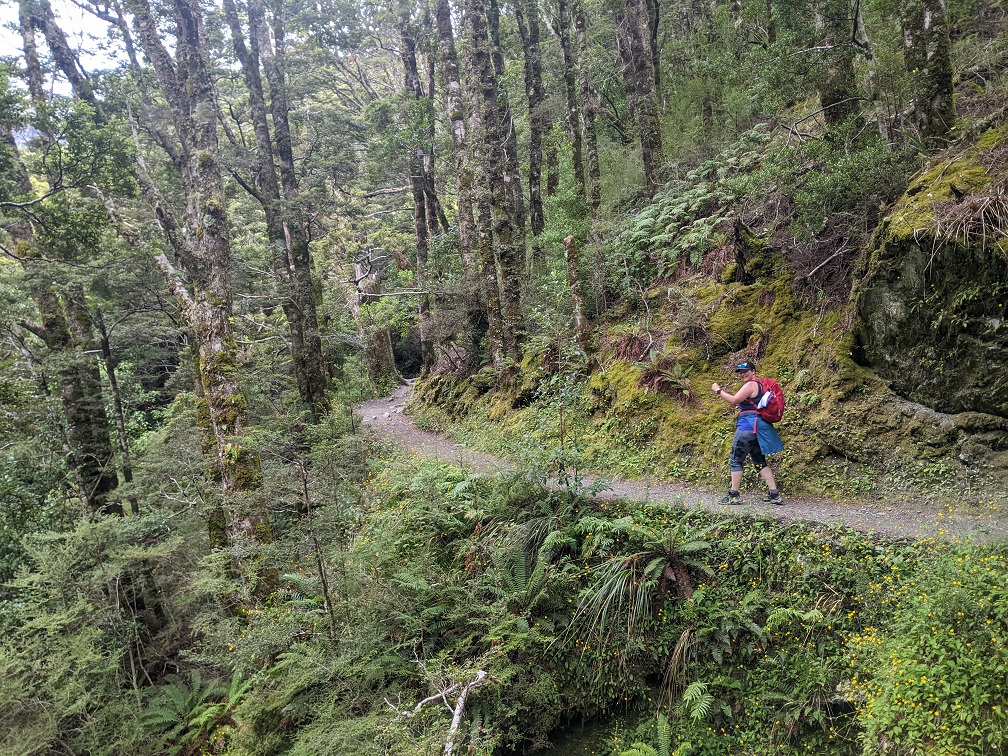Image: Aoraki (Mt Cook) + Hooker Lake
31 January 2023
Post 1 of 4
My 2023 began with a jump across the ditch to explore the South Island of New Zealand with my good mate Emma. How to introduce Emma? Super knowledgeable about the environment, flora and agriculture, an avid social media user and an excellent travel buddy.
We got ourselves a medium sized diesel motorhome with an engine that zoomed, a decent gas stove, an effective fridge, good storage and a bathroom with shower and toilet. The bed was wide enough to ensure we each had sufficient elbow space, but the lack of length meant my feet were hanging in the walkway. In total we travelled 3500kms over 21 days. Motorhome rental was $6000 AUD including insurance, fuel cost $660 and we spent $560 on campgrounds – not much free camping available these days.
Starting in Christchurch, we ventured north and continued in an anti-clockwise direction around the South Island. Motorhomes of every shape and size are easily the most common vehicle on the road, and there are plenty of areas on the South Island where there are way more tourists than locals. Stats NZ reckons there are just over 1.1 million people living on the South Island and the other 4 million Kiwis are on the North Island. That’s despite the South Island being about 25% larger, hence the sparse population. Fun fact: New Zealand consists of over 600 islands.
We found the summer weather to be highly variable. We experienced temperatures up to 30 degrees on the east coast and down to 5 overnight in the central areas. We had torrential rain, gale force winds, burning hot sun and perfect weather days. The clouds were particularly cool. Moody stalking clouds that clung to mountain peaks and hill sides, gathering to appear blue, ominous and ready to engulf us. The coastlines were generally stunning – dramatic, blue, dangerous and cold – sharp drops, rugged rocks – peppered with seal colonies and fisherman’s shacks, and beaches ranging from mud to white sand.

sending us directly to the laundromat to dry everything we were wearing… Ah memories…
Beech trees are very common in the South Island’s mountains as the largest remaining indigenous forest type in New Zealand. We learnt in our travels that an insect lives in the bark of the beech tree and cleverly turns the beech tree’s sap into sugar liquid drops called honeydew. Basically the insect sticks it bum out with the honeydew dribbling forth and the bees, birds and other forest inhabitants go crazy for it. How cool is nature?!
The buzzing excitement of the bees around the beech trees was one of the nicer sounds of our trip. The sound of thousands of sandflies headbutting the fly screen of the motorhome, trying to get in to maul us was the worst. Interestingly, we found New Zealand campgrounds to be very quiet in the mornings – no one really stirs before 8am and daytime noise only starts after 9am. Makes for good sleeping and pleasant starts to the day.
We ticked most of the tourist boxes which I’ll detail further in the next instalment – white water rafting, boat tour of Marlborough Sounds, kayaking on Milford Sound, wineries, hiking and more hiking, stunning vistas, coastal cliff walks, and gnarly sea scapes.
I had a few minor issues with the language – I heard LIFT but the woman was saying LEFT; the guy on the phone thought my ‘6’ was a dirty word when quoting a booking reference; I made my friend’s husband blush when I asked if we could sit and enjoy the sunset on his big DECK in my best Kiwi accent…













What an excellent travel tale. It kept me totally enthralled till the end. Your photography is outstanding!